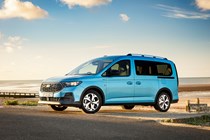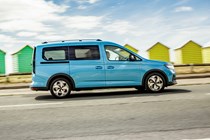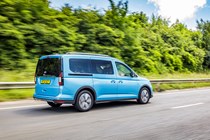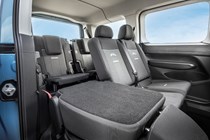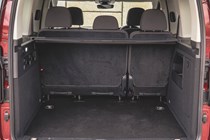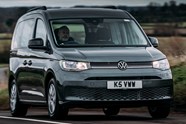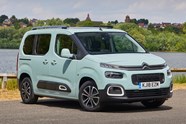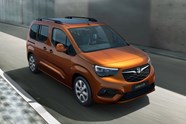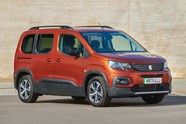Ford Tourneo Connect review
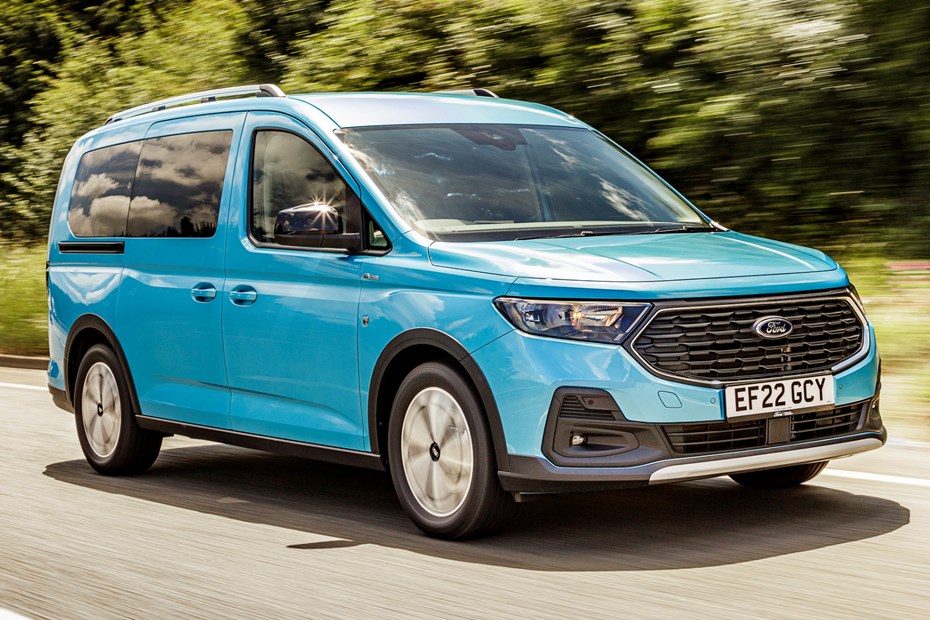
At a glance
| Price new | £34,500 - £39,156 |
|---|---|
| Used prices | £16,292 - £30,128 |
| Road tax cost | £195 |
| Insurance group | 10 - 16 |
Get an insurance quote with

|
|
| Fuel economy | 32.1 - 67.3 mpg |
| Miles per pound | 4.7 - 8.6 |
| Number of doors | 5 |
| View full specs for a specific version | |
Available fuel types
Petrol
Diesel
Hybrid
Pros & cons
- Huge amount of space
- Good value
- Economical engines
- Looks like a van
- VW Caddy offers more variety
- Fiddly infotainment
Ford Tourneo Connect MPV rivals
Overview
Vans with windows first started being a thing in the 1990s. Back then they were essentially commercial vehicles with a few pews wedged in and some glass, but today they are much closer to cars than they have ever been.
That’s because some vans are essentially cars underneath now. You see, the Ford Tourneo Connect is actually a re-badged Volkswagen Caddy, which is on the same platform as a VW Golf. This means you get touchscreen infotainment, parking sensors and other creature comforts you’d find in a car.
Rivals include the aforementioned Caddy, as well as the Peugeot e-Rifter, Citroen e-Berlingo and Vauxhall Combo-e.
There are two models to choose from. The Tourneo is a short-wheelbase model with five seats, while the Grand Tourneo is a long-wheelbase with seven seats. If you’d like to find how I reached my verdict on the Ford Tourneo, head over to our how we test cars page.
What’s it like inside?
If you’ve sat in the Volkswagen Caddy, you’ll recognise a lot here. Up front the materials are plush enough for something that’s van-based, with a leather steering wheel and soft touch plastics.
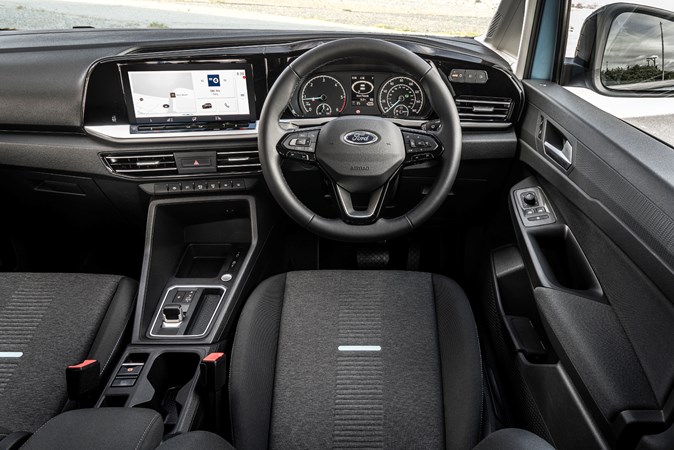
Cubbies are in good supply. There are two two cupholders behind the gear selector, a space for your phone in front of it, door bins large enough for litre-bottles and a useful shelf above your head for documents.
The three rear seats (accessed via the sliding rear doors) are all separate. As you’d imagine for a van, there’s acres of room back here. Six footers can fit back here no problem without banging knees.
Individual seats can be removed too, so it can essentially revert back to being a van. The rear two seats in the seven seater models fold into the floor, meaning a flat loading space without the need to completely remove.
Boot capacity is epic. Official capacity is 1100 litres for the short-wheelbase car and 1452 (with the rearmost seats folded up) for the long-wheelbase model. The boot hatch is very long and heavy, which is something I had to look out for when parking in tight spots.
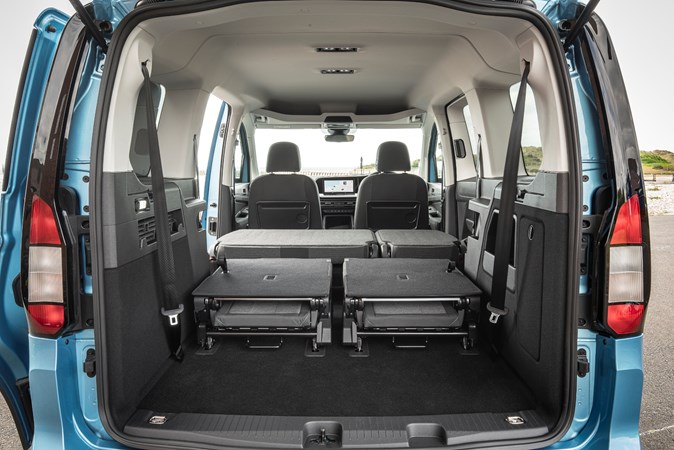
The infotainment system is borrowed from the Caddy, meaning you receive a 10.0-inch screen complete with Apple CarPlay and Android Auto. It works fine, the graphics are modern and it feels very much car-like.
My biggest gripe here is with the heating controls. I had to prod the screen a few times just to notch the heating up a touch, and the slider, used to change the temperature, is touch sensitive, fiddly and unlit, which made it harder to use at night.
Comfort
Despite the car-like interior, I did still sit in a van-esque seating position. This meant I sat high up and quite upright, with an imperious view of the road ahead. The steering wheel comes in and out as well as up and down and the driver’s seat has plenty of adjustment.
The rear seats are also large and supportive, but there is a transmission tunnel that splits them, ultimately robbing the middle seat passenger of legroom.
Safety
The Tourneo Connect received a five out of five from European crash regulators Euro NCAP. It borrows most of its safety equipment from the VW Caddy, which also scored highly.
As standard there’s autonomous emergency braking with pedestrian detection, lane assist and a driver alert system. You can also option adaptive cruise control and blind spot monitoring.
What’s it like to drive?
There are only two engines to choose from, one petrol and one diesel. The former is a 1.5-litre with 114hp on offer. It’s found in plenty of VW products and is a solid choice if you don’t want a diesel. I felt it was smoother and quieter than the one fed by the black pump and has lower emissions, too.
It can feel a bit weedy if you regularly travel seven up or with a big load in the boot. It’s best suited to people who mostly drive local journeys and rarely explore the motorway.

The diesel is a 2.0-litre with 122hp. It’s effortless, even when crammed full of people and stuff. When empty, it’ll do the 0-62mph sprint in around 12 seconds, which isn’t too bad for a car in this class.
On the road it’s relatively noisy thanks to a lack of insulation and huge door mirrors and the engine noise really creeps into the cabin. Around roundabouts you’ll certainly feel yourself moving around in your seat compared with MPVs such as the Ford S-Max. However it’s no worse than other car-derived vans such as the Peugeot e-Partner.
Soft suspension means there’s a bit of bounce if you hit a pothole, especially if you’re travelling unladen. But it does smooth out nicely at faster speeds.
The standard six-speed manual gearbox is light with a short throw, while the optional seven-speed automatic is smooth and quick-shifting.
Ownership costs and maintenance
According to the WLTP tests, the diesel engine is the one to go for if you’re looking for the cheapest running costs. We’ve tested this engine in various states, including fully loaded with a sofa, and can confirm it’ll easily achieve 40-50mpg.
The petrol engine will reportedly do around 44 mpg. We’re yet to try this engine in the Tourneo Connect, but can confirm in smaller vehicles it regularly achieves 40mpg.
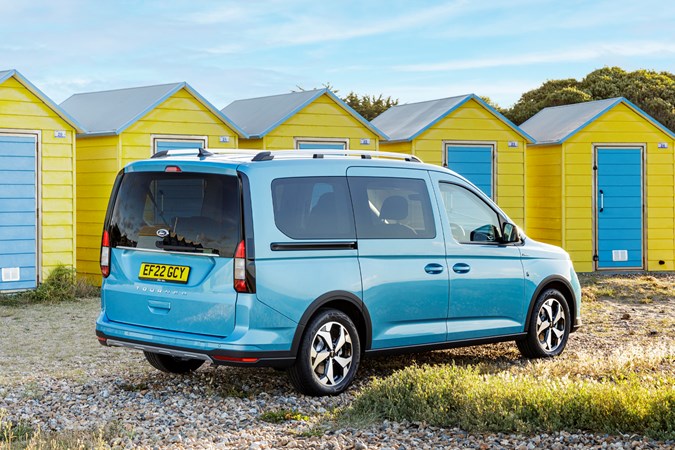
The Tourneo Connect comes with a three-year 60,000-mile warranty and comes with one year’s worth of breakdown cover. The VW Caddy, which is mechanically identical, comes with a longer warranty.
Ford recommends servicing every year or 10,000 miles (whichever comes first). The company also offers fixed servicing that can be bundled into your monthly payment.
What models and trims are available?
This is nice and simple. There are Titanium and Active models to choose from, the former being cheaper and the latter offering some black plastic cladding to make it a bit more outdoorsy.
Both come with a choice of petrol or diesel engines, and in five-seat and seven-seat configurations.




